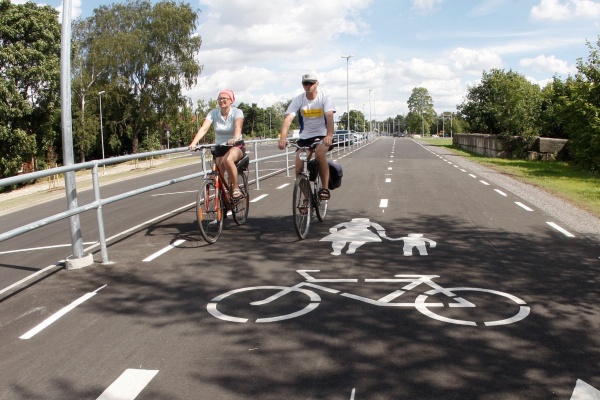Tallinn City Government submitted a draft Sustainable Urban Mobility Plan to the City Council
The goal by 2035 is to achieve a balanced distribution of modes of transport, accessible mobility infrastructure, and a safe environment for transportation in the Tallinn region.
This initiative aligns with the broader objectives set out in the city’s development strategy, “Tallinn 2035”.
Deputy Mayor Vladimir Svet said that the urban mobility landscape encompasses various aspects, from modernizing the public transport network and vehicles to street design. “One of the core objectives of the Mobility Plan is to create a safe environment for transportation. In Tallinn, no one should lose their life in traffic, which is why the Vision Zero strategy which means no traffic fatalities is of utmost importance. It ensures safer and better traffic conditions for the residents. Additionally, a safe environment encourages eco-friendly modes of transportation, such as walking and cycling, helping to reduce traffic congestion and air pollution in the city,” explained Svet. The Deputy Mayor also noted that Tallinn currently aligns with the goals of its development strategy when reconstructing streets and modernizing the public transport network.
The three main objectives of the Mobility Plan are: The distribution of modes of transport in the Tallinn region is balanced; mobility infrastructure is accessible, and well connected for all modes of transport, and the environment safety.
According to the set goals, both urban space and well-organized public transport promote active and sustainable modes of transport – walking, cycling, and public transport. This also contributes to the realization of wider environmental and climate objectives. One indicator in this context is reducing emissions. To achieve this, Tallinn plans to increase the share of environmentally friendly public transport and develop the necessary infrastructure. For example, the goal is to make the capital’s public transport fossil-fuel-free by 2035. The concept of zero-emission zones, which is planned to be implemented in certain areas, is also being developed.
According to the plan, mobility infrastructure – streets, public transport, bike lanes, health trails, squares, and parks – is designed to be attractive. Journeys become more seamless and accessible when streets, sidewalks, public transport stops, and the bike lanes are available to everyone, at all times, throughout all life’s phases.
The main indicator of a safe mobility landscape is that no fatal traffic accidents occur in Tallinn. Most people perceive the Tallinn mobility landscape as safe, and the number of accidents and traffic damage is decreasing.
The implementation of the Sustainable Urban Mobility Plan is supported by the “Tallinn 2035” implementation plan and the city’s budget strategy, which is prepared for four to five years. These form a whole in which the main indicators of the sector are set, the main activities and investments, and the financial resources for their implementation.
For the city, the mobility plan is an important conceptual pillar and a fundamental basis document that provides very clear guidelines for mobility-related goals by 2035. The Mobility Plan supports the long-term goal of achieving a climate-neutral vision by 2050.
The Tallinn Sustainable Urban Mobility Plan must be approved by the City Council. The draft can be viewed on the Tallinn website.

